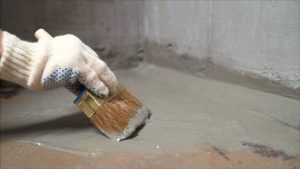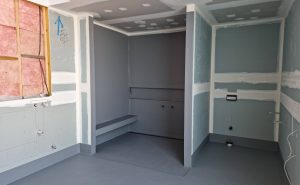Exploring the Best Forms of Waterproofing for Ultimate Protection
The Importance of Waterproofing
Water damage is a common and costly issue that can affect homes, buildings, and various structures. Whether it’s a leaky roof, basement flooding, or moisture seeping through walls, the consequences of water infiltration can be severe, leading to structural damage, mold growth, and compromised integrity. This is why waterproofing is a crucial aspect of construction and maintenance, and choosing the right method can make a significant difference in protecting your property.
Understanding the Different Waterproofing Methods

When it comes to waterproofing, there isn’t a one-size-fits-all solution. Different structures and environments may require specific approaches to ensure effective protection against water damage. Let’s explore some of the best forms of waterproofing and their applications.
1. Exterior Waterproofing
Exterior waterproofing involves applying protective measures to the outside of a structure to prevent water from entering. This method is often used during the construction phase or as part of a renovation project. Common techniques include the application of waterproof membranes, sealants, and drainage systems.
One popular choice is the use of waterproof membranes, which are applied to the exterior walls to create a barrier against water penetration. These membranes are typically made of bituminous or rubberized materials, providing a durable shield against moisture.
In addition to membranes, sealants play a crucial role in exterior waterproofing. Sealants are applied to joints and cracks, creating a watertight seal that prevents water from infiltrating vulnerable areas. This method is effective in protecting against rainwater and groundwater.
Drainage systems, such as French drains, are also integral to exterior waterproofing. These systems divert water away from the foundation, preventing it from accumulating and causing damage. Proper grading of the landscape is another essential aspect of exterior waterproofing, ensuring that water flows away from the structure.

2. Interior Waterproofing
Interior waterproofing focuses on managing water that has already entered a structure. This method is commonly used in existing buildings where exterior waterproofing may not be feasible or sufficient. Interior waterproofing measures include the installation of drainage systems, sump pumps, and the application of waterproof coatings.
Sump pumps are a key component of interior waterproofing. They are installed in basements or crawl spaces to pump out excess water and prevent flooding. When water accumulates in the sump basin, the pump is activated, redirecting water away from the foundation.
Waterproof coatings, such as sealants and paints, are applied to interior surfaces to create a protective layer that resists water penetration. While these coatings can be effective, they may require periodic maintenance and reapplication to ensure long-term performance.
3. Green Roof Waterproofing
Green roofs, also known as living roofs, are becoming increasingly popular for their environmental benefits and aesthetic appeal. These roofs feature a layer of vegetation planted on top of a waterproof membrane. The waterproofing layer is crucial for preventing water from reaching the underlying structure while supporting the growth of plants.
The waterproof membrane used in green roof systems is typically a synthetic material designed to resist root penetration and provide a durable barrier against water. This method not only protects the building from water damage but also offers insulation, reduces energy costs, and contributes to environmental sustainability.
Choosing the Best Waterproofing Method for Your Needs
Selecting the best form of waterproofing depends on various factors, including the type of structure, climate, and budget. Consulting with a professional waterproofing contractor is essential to assess the specific needs of your property and determine the most effective solution.
Consider the following when choosing a waterproofing method:
Severity of Water Exposure: If your property is prone to heavy rainfall or sits in an area with a high water table, exterior waterproofing may be more suitable to prevent water infiltration.
Existing Damage: If water damage has already occurred, interior waterproofing measures may be necessary to address the immediate issue and prevent further harm.
Environmental Considerations: For those looking to embrace sustainability, green roof waterproofing offers a unique solution that combines water protection with ecological benefits.
Budget Constraints: Each waterproofing method comes with its associated costs. It’s essential to weigh the benefits against your budget constraints to make an informed decision.
Conclusion
In conclusion, the best form of waterproofing depends on a combination of factors, and there is no one-size-fits-all solution. Exterior waterproofing, interior waterproofing, and green roof waterproofing each have their advantages and applications. To ensure the longevity and integrity of your structure, it’s crucial to assess your specific needs and consult with waterproofing professionals. By investing in the right waterproofing method, you can protect your property from the damaging effects of water infiltration and enjoy a dry and secure environment for years to come.

